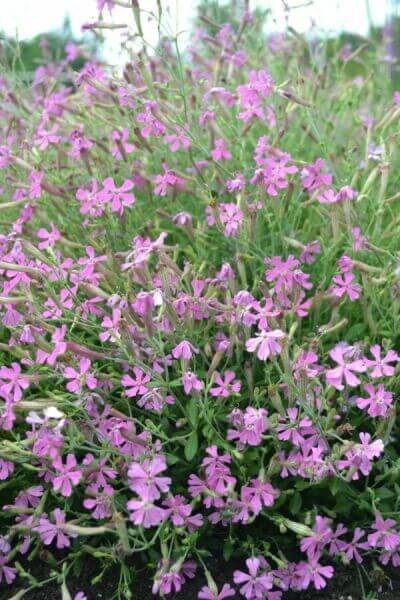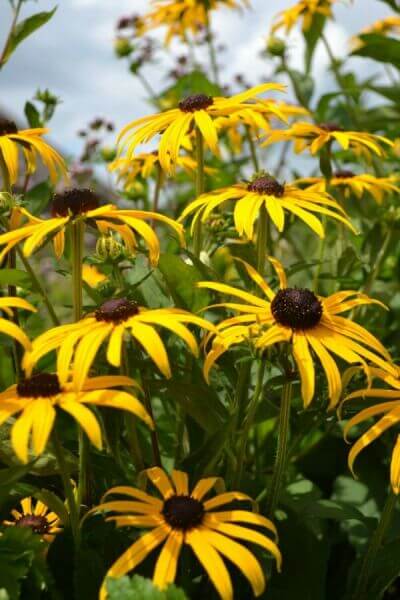Best Hedging Plants For Modern Gardens
Best Hedging Plants For Modern Gardens
Blog Article
Hedge Plants For Natural Landscapes
Boost your garden's allure with lavish hedge varieties such as Yew (Taxus), Thuja, Laurel, Photinia, and Bamboo, celebrated for their structural stability and environmental advantages.
Yew and Thuja supply evergreen coverage and winter season durability, while Laurel uses fast development and broad, fragrant leaves.
Photinia includes seasonal charm with its lively red foliage, and Bamboo lends a low-maintenance, peaceful atmosphere.
These hedges improve air quality, minimize sound, and create tranquil, private areas.
Appropriate planting, spacing, and maintenance make sure energetic growth and eco-friendly harmony.
Check out how these rich varieties can raise your garden's beauty and wellness.
Key Takeaways
Transform Your Garden With Lush Hedge Ranges
- Select Yew for its dense, evergreen development and exceptional durability.
- Go with Laurel for its fast growth and broad leaves, guaranteeing quick personal privacy.
- Pick Photinia for its lively seasonal foliage, which turns a striking dark red.
- Make use of Bamboo for a low-maintenance, winter-hardy hedge with aesthetic appeal.
- Space plants 2-3 per meter and prune routinely for ideal development and health.
Popular Hedge Plants
When changing a garden with rich hedge ranges, it's necessary to think about popular hedge plants such as Yew, Thuja, Laurel, and Photinia due to their special characteristics and advantages.
Yew (Taxus) is extremely respected for its durability and thick, green development, making it a prime option for withstanding landscapes.
Thuja is kept in mind for its evergreen foliage and robust winter durability.
Photinia adds seasonal vibrancy with red leaves that darken in time, creating dynamic visual appeal.
Laurel offers rapid development and aromatic, broad leaves, perfect for fast privacy.
Furthermore, Bamboo is an excellent choice for atmosphere, using a low-maintenance, winter-hardy choice that improves the garden's aesthetic with its elegant, swaying canes.
These choices accommodate a variety of horticultural needs and choices.
Advantages of Garden Hedges
Garden hedges offer a multitude of advantages, making them an important addition to any landscape. These natural barriers are economical to implement and supply significant wind defense, enhancing air blood circulation and adding to sound reduction. The dense foliage of hedges like Thuja and Beech makes sure personal privacy by obstructing visibility, producing a secluded and serene environment.
Hedges likewise play a crucial function in microclimate regulation, offering a stable environment that fosters plant development and decreases temperature fluctuations. Their intricate leaf structures filter toxins, enhancing air quality and contributing to a much healthier garden ecosystem.
Furthermore, hedges excel in noise decrease, taking in and deflecting acoustic waves to lower ambient noise levels. This double functionality of offering both visual and acoustic personal privacy enhances the general tranquility and visual appeal of any garden.
Planting and Upkeep Tips
For a successful hedge, careful preparation of the planting area is important. Ensure the soil has appropriate pH and drain to support strong root advancement.
Space the plants properly for the picked species. Water the hedge regularly during its preliminary development phase, adjusting as needed with seasonal modifications.
Carry out a systematic insect control and illness avoidance method, using chemical or natural treatments when essential. Regularly inspect for aphids, mites, and fungal infections.
Apply mulch to keep moisture and reduce weeds. Seasonal pruning promotes thick development and air circulation, essential for plant health.
Following these guidelines will help you cultivate a dynamic, properly maintained hedge that enhances the beauty of your garden.
Spacing and Trimming Guidelines
Spacing and Trimming Guidelines
Appropriate spacing and trimming are crucial for cultivating healthy, visually appealing hedges. Adequate spacing ensures each plant receives sufficient nutrients, light, and airflow.
Follow these guidelines for optimal hedge maintenance:
- Spacing: Position hedge plants 2-3 plants per meter to encourage robust development.
- Pruning Techniques: Routine pruning is necessary for keeping wanted hedge height and shape. Cut brand-new development in summertime and cut back older wood during winter.
- Seasonal Care: Change cutting schedules and approaches according to seasonal requirements to guarantee plant health.
- Hedge Height: Routinely monitor and trim to keep the wanted hedge height and accomplish uniform visual appeals.
Abiding by these steps will ensure your hedge prospers, improving both the appeal and functionality of your garden.
Picking the Right Hedge
Picking the Right Hedge
Choosing the appropriate hedge includes assessing factors such as fully grown height, foliage density, and ecological resilience. Effective hedge plant selection needs comprehending each species' development qualities and site-specific adaptability.
For instance, Yew (Taxus) offers exceptional longevity and thick growth, while Thuja is notable for its winter strength. Furthermore, thinking about maintenance requirements is essential; fast-growing types like Laurel or Privet demand routine trimming, whereas low-maintenance options like Bamboo or Ivy may be preferable for those seeking very little maintenance.
Environmental aspects such as soil type, light accessibility, and wetness conditions must also direct the selection procedure. This cautious technique ensures the selected hedges will thrive, offering both practical and visual benefits to the garden landscape.
Delivery and Planting Advice
To ensure your hedge plants prosper, they should be delivered by specialized carriers and planted promptly upon arrival.
Follow these important actions for effective planting:
- Soil Preparation: Improve the soil with raw material to enhance drain and nutrient material.
- Planting Depth: Create a trench two times the width and equivalent to the depth of the root ball.
- Watering Strategies: Water thoroughly after planting, keeping the soil consistently damp however not filled.
- Mulching: Use a layer of mulch to retain moisture and suppress weeds.
Client Assistance and Service
Offered the vital role of timely assistance in horticultural pursuits, our consumer assistance group is available 6 days a week through telephone, email, and social media to provide expert recommendations and promptly address any concerns. Their devotion to quick response times ensures client fulfillment by dealing with questions related to plant health, ideal planting techniques, and upkeep schedules.

Action Time
----------------------
Within 24 hours
This detailed support group, reinforced by a stellar 9.3/ 10 client score, highlights our dedication to improving the gardening experience for each customer.
Often Asked Concerns
The Length Of Time Does It Consider Hedge Plants to Develop?
Hedge plants generally require one to three years to become fully established, with the exact period differing by types and growing conditions.
Efficient care during this crucial period is important for robust growth. Consistent watering, vigilant weed control, and appropriate fertilizer application are pivotal in promoting strong root development.
For example, fast-growing types like Laurel might develop quicker, while slower-growing ranges such as Yew might take longer. Diligent maintenance speeds up the facility procedure, resulting in healthy and dense hedges.
What Are the very best Hedge Plants for Personal Privacy?
The concern of the finest hedge plants for privacy includes examining evergreen and deciduous alternatives.
Evergreen hedges like Thuja, Laurel, and Cypress offer year-round coverage, ensuring constant personal privacy.
In contrast, deciduous hedges such as Beech offer seasonal personal privacy, shedding leaves in chillier months.
Key maintenance tips for personal privacy hedges include regular cutting, fertilizing in spring, and appropriate spacing-- typically 2 to 3 plants per meter.
In addition, consistent watering and diligent weed elimination are essential for promoting healthy, dense development.
Can Hedge Plants Attract Wildlife to My Garden?
Yes, hedge plants can bring in wildlife to your garden by offering essential advantages like shelter, food, and nesting sites, therefore improving local biodiversity. Yew, holly, and laurel are outstanding for attracting birds, while ivy supports a range of pests.
However, it's important to note that there are some downsides, such as increased maintenance to handle pests and routine maintenance. Carefully picking and maintaining hedge ranges can assist balance these disadvantages and advantages, ultimately promoting a sustainable and vibrant community in your garden.
Exist Any Flowering Hedge Plants Available?
Yes, there are flowering hedge plants offered that can boost the beauty of your garden.
For example, Elaeagnus, likewise referred to as Olive Willow, produces fragrant white flowers in the fall, including a touch of sophistication.
Photinia, another popular choice, showcases dynamic red leaves that develop into an abundant green, developing a dynamic visual impact throughout the seasons.
To guarantee these plants grow, it's essential to practice appropriate pruning methods and seasonal upkeep, such as cutting brand-new growth in the summer and cutting back in the winter season.
These procedures will assist keep the health and visual appeal of your flowering hedges.
How Do I Prevent Pests in My Hedge Plants?
To prevent insects in hedge plants, utilize natural insect control techniques Additional info and keep correct hedge care. Present helpful pests like ladybugs, which victimize harmful pests, to create a balanced ecosystem.
Regularly inspect your hedges for signs of problem and promptly remove any affected parts to prevent the spread. Make sure the health of your hedges by using well balanced fertilizers and offering sufficient water.
Use mulching to retain soil moisture and correct spacing to lower plant tension and promote robust growth. These practices collectively help in decreasing bug problems and preserving a healthy hedge.
Conclusion
In essence, choosing the right hedge ranges such as Yew, Thuja, and Laurel can change any garden into a peaceful haven. These plants supply year-round greenery, enhance visual appeal, and deal practical advantages like sound reduction and wind defense.
Correct planting methods, accurate spacing, constant watering, and seasonal trimming are vital for optimum growth.
Reputable delivery services and skilled customer assistance guarantee a seamless experience from purchase to planting, making it easier than ever to elevate your outside space.
Garden hedges use a wide variety of benefits, making them an important addition to any landscape. These natural barriers are affordable to carry out and provide substantial wind security, boosting air flow and contributing to sound reduction. The thick foliage of hedges like Thuja and Beech ensures personal privacy by obstructing exposure, creating a peaceful and remote environment.

Pruning Strategies: Routine pruning is important for maintaining wanted hedge height and shape. Cut new development in summertime and cut back older wood during winter.
Report this page